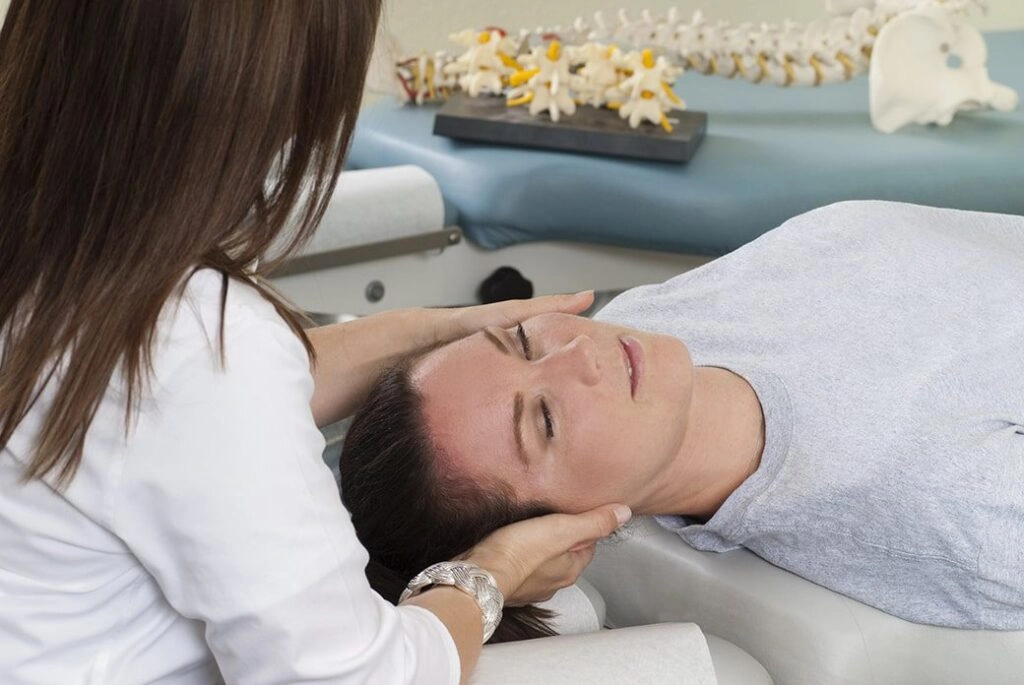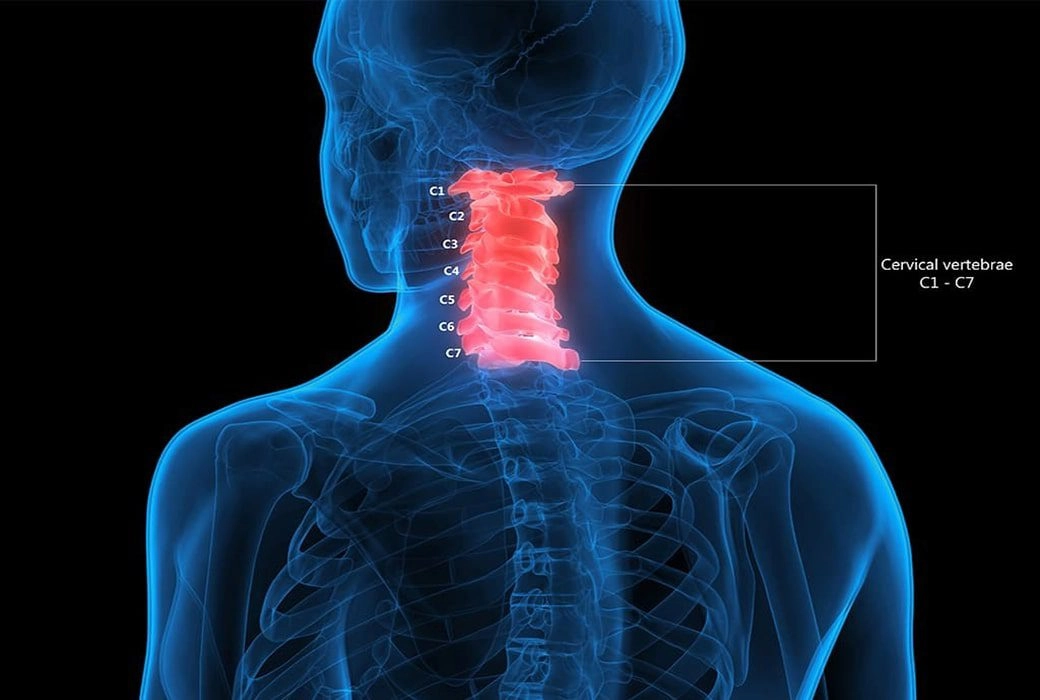The C1 and C2 vertebrae are the first two vertebrae located directly under the skull. They allow us to move our heads as we do hundreds of times daily. According to Dr. Brent Wells, a chiropractor in Anchorage, Alaska, a misalignment of those vertebrae can cause a range of problems throughout the body if the spinal cord is affected. Luckily, most misalignments require non-surgical and non-invasive treatments, such as chiropractic neck adjustment treatments.
Common C1 and C2 vertebrae misalignment symptoms include pain in the upper back, the neck, and the top of the head. It can also cause pain behind the eyes, at the temples, and behind the ears. Dizziness, fatigue, nausea, and numbness of one side of the tongue can occur.
Symptoms of C1 and C2 Vertebrae Misalignment
Since the C1 (atlas) and C2 (axis) vertebrae protect the spinal cord and facilitate head movement, there are several symptoms that their spinal misalignment can cause. Mainly, these symptoms consist of the following:
- Neck pain
- Headaches
- Back pain
- Numbness or pain in one or both arms and legs
- Fainting
- Loss of hearing
- Difficulty turning the head
- Trouble sleeping
However, since much of the central nervous system and blood vessels pass through the C1-C2 joint, some research suggests that a misalignment can cause a host of other problems, such as:
- High blood pressure
- Vertigo
- Alzheimer’s
- Constipation
- Dementia
- Other neurological issues
The fact is that what makes the C1 vertebra so beneficial for head movement also makes it susceptible to misalignment. It allows for head movement but it’s also very resilient to injury. However, misalignments can happen without injury and can be corrected with non-invasive treatment options.
What Nerves Are Affected by C1 and C2 Misalignment?
The spinal cord serves as a protective highway for the central nervous system. The nerve branches in the body all send signals through the spinal cord up to the brain. As such, nearly all the body’s nerves pass through the C1-C2 joint.
This is why a severe injury to that cervical joint is considered the worst spinal injury. It can cause paralysis from the neck down if the communication is severed. However, since the human body is designed to protect itself, severe injuries to the C1 or C2 vertebrae are the rarest of spinal injuries.
So, although a misalignment won’t cause paralysis, it can affect many of the body’s functions. The nerves most likely to be affected by a C1 and C2 misalignment are named for the vertebrae from which they exit. The C1 nerve mainly controls motor function, whereas the C2 nerve allows for sensation on the upper part of the head.
How To Fix Misalignment?
Fixing an upper cervical misalignment depends mainly on what’s causing the misalignment in the first place. Unfortunately, this is hard to determine without seeing a chiropractor. There can be many different causes, including:
- Spinal Osteoarthritis – Degenerative joint disease in the cervical spine.
- Crowned Dens Syndrome – Calcium deposits on the C2 vertebrae.
- Basilar Invagination – When the C2 vertebrae move into an unnatural position.
- Synovial Cysts – When fluid-filled sacs occur due to joint degeneration.
What’s causing the misalignment will inform the treatment options available. Most often, non-surgical techniques will be prescribed unless the spinal cord is inhibited or the symptoms are severe or life-threatening. For most people, chiropractic treatment for this type of neck pain is the best option.

How do Anchorage Chiropractors Adjust C1 and C2?
When visiting our team of Anchorage-based chiropractors for the first time, patients will undergo a thorough initial exam no matter the presumed issue. This includes family and personal medical history, a physical exam, lifestyle habits, and work habits. This is essential for the chiropractor to get an overall picture of the patient’s health and perhaps even what’s causing the pain.
Sometimes, chiropractors may order X-rays, CT, or MRI scans. If a chiropractor decides that the patient will best benefit from a specialist, he or she will recommend one for treatment. If the doctor of chiropractic decides that the patient would benefit from chiropractic care, the following are options for treatment:
Chiropractic Neck Adjustments for Misalignment
The most common treatment for a misalignment of the C1 and C2 vertebrae is a neck adjustment. While some chiropractic care for the lower spine involves high-velocity, low-amplitude adjustments, this is not usually the case for neck adjustments. While every patient’s needs differ, most chiropractors use gentle, hands-on adjustments for the upper neck area. These adjustments are exact and aim to relieve pain, increase the range of motion, and get the vertebrae back into their proper place.
Are Neck Adjustments Risky?
Some people are concerned about the risk of neck adjustments. However, studies have shown a very low risk of serious adverse events due to chiropractic neck adjustment. One study puts the number at approximately one serious adverse event in 5 million adjustments. This is much less than the adverse effects of over-the-counter pain relievers.
If a patient feels nausea or fever, there is a high possibility the reason is the toxins released after a chiropractic adjustment.
Efficacy of Chiropractic Care and Neck Adjustments in Anchorage
Chiropractic care is not only safe, but it is effective in treating patients with upper cervical misalignment. One study showed that patients saw improvements in under three visits on average. Some patients notice improvements after one adjustment.
If you or someone you know may have C1 and C2 vertebrae misalignment, consider visiting a chiropractor for an initial diagnosis and care. Most insurance plans cover chiropractic care, and you don’t need a physician’s recommendation to visit. You can schedule a visit today to get rid of your neck pain.
Imagine a life where the stiffness and discomfort in your neck are no longer a constant burden. Can you see yourself turning your head with ease, free from the relentless pain that’s been holding you back? Our trusted chiropractor for neck pain has helped thousands of individuals in Anchorage, Alaska, bringing them the relief they yearned for and restoring their range of motion.
Sleeping With Neck Pain
Unfortunately, a misalignment of the C1 and C2 vertebrae can often become more apparent when lying down. As such, many people have great difficulty sleeping with this cervical misalignment. Luckily, you can do a few things to get to sleep when you have neck pain. A few of these include:
- Sleep on a memory foam pillow for proper support.
- Sleep on your back or your side, not your stomach.
- Maintain proper posture throughout the day to avoid neck pain at night.
- See a chiropractor for tips and treatment to alleviate neck pain.
Resources:
https://www.sciencedirect.com/science/article/abs/pii/S0161475401631622
https://link.springer.com/article/10.1186/1471-2474-12-219
https://www.ncbi.nlm.nih.gov/pmc/articles/PMC2732255/










